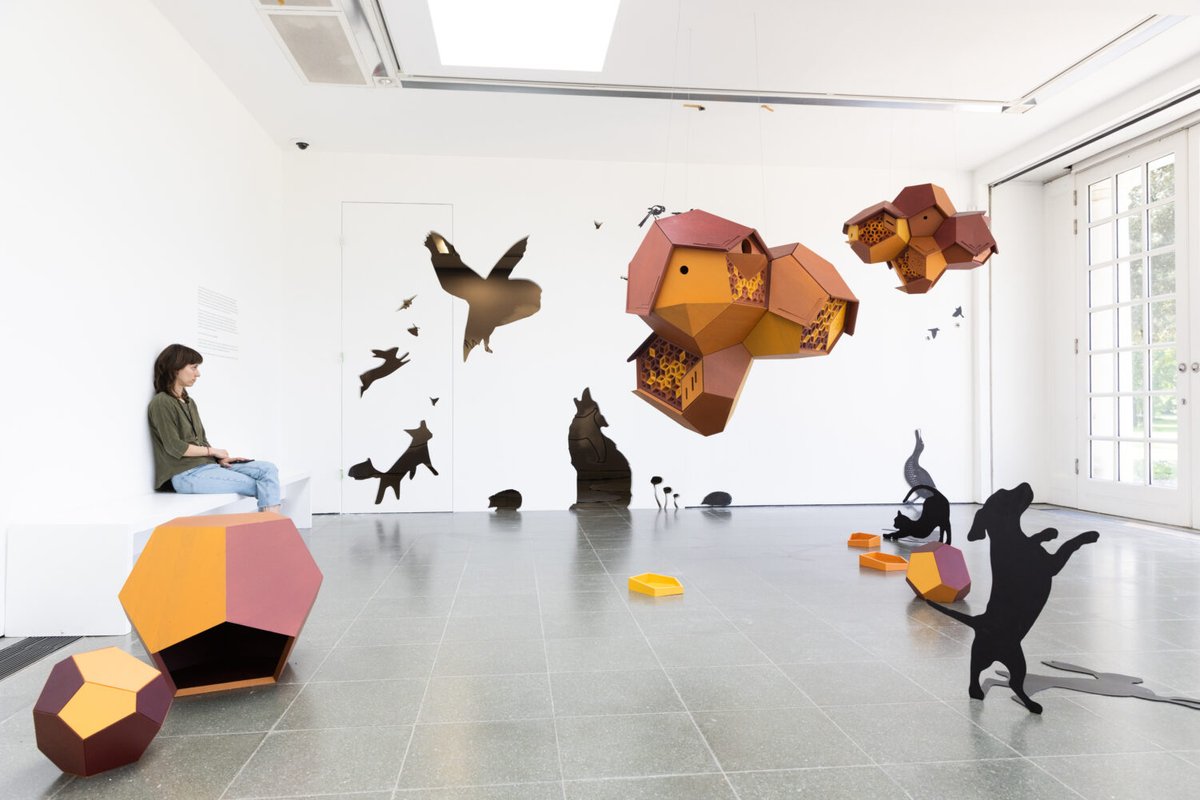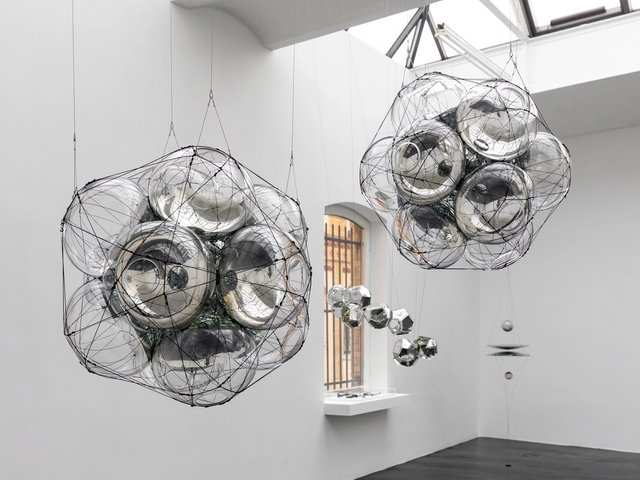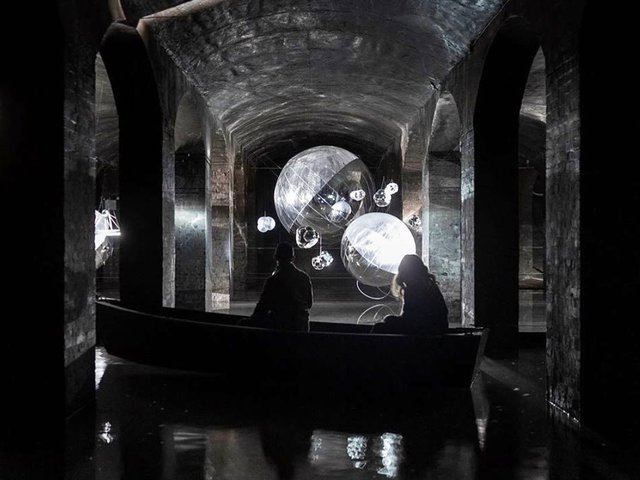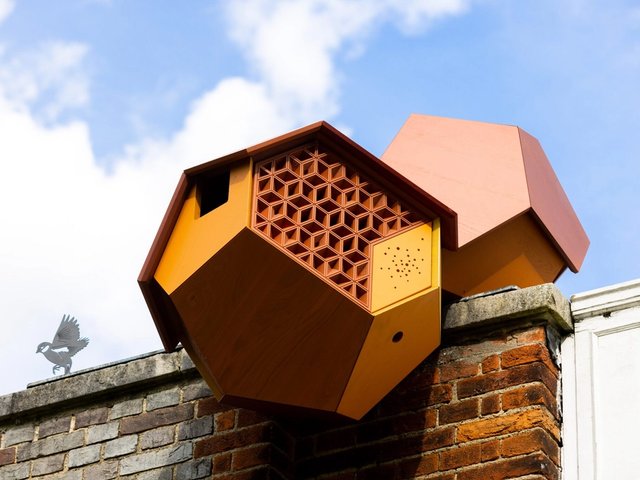As this column’s title suggests, there is no shortage of artists currently making work about the environment. Or institutions at pains to signal their commitment to greenness. But Tomás Saraceno is in a league of his own. As is the Serpentine Gallery. This is borne out by Saraceno’s current show Web[s] of Life in Serpentine South which presents a brave new model of sustainable exhibition-making that lays down the gauntlet to all those planning and programming environmentally aware shows.
Saraceno first trained as an architect and his is an all-encompassing vision. For more than two decades this Argentina-born, Berlin-based artist has been working with local communities, scientific researchers and institutions worldwide to produce a body of work which aims to seek out a more equitable balance of human, techno and bio diversity. His many and various projects draw attention to the complex and interdependent factors that make up an ecosystem, from humans and animals to plants and all kinds of matter. Saraceno treats his Berlin studio as “an experimental environment” in which he brings together a range of disciplines spanning art, architecture, design and social sciences to research and develop ambitious sculptural installations, participatory events and community led initiatives.

Cloud Cities: Species of Spaces and Other Pieces* (2023). Installation view at Tomás Saraceno In Collaboration: Web(s) of Life, Serpentine, London, 2023
Photography by Studio Tomás Saraceno
All of the above are in evidence in Web[s] of Life, in which the Serpentine South building and its operations have been adapted to create a “porous environment” that directly responds to the surrounding park and weather conditions. The gallery’s heating and climate control systems have all been turned off, with the only source of power for the show coming from solar panels installed on the roof. If the day is too cloudy, then the electricity temporarily cuts out, suspending Saraceno’s film works and the illumination of exhibits. In the case of a heatwave, parts of the gallery will be rendered uninhabitable, with staff and bookshop decamping to continue their business under the trees of Hyde Park.
The Serpentine further merges inside and out by leaving one side of the gallery entirely open to the landscape during each day of the show, with creatures of all kinds—both wild and domesticated—invited to enter and inhabit its spaces. There are multiple sculptural bird boxes, insect houses, a ladder for squirrels, and silhouette sculptures to welcome foxes, dogs, deer and hedgehogs. An elegant diptych of minimal blank canvases conceals hidden dog treats to entice the park’s canine population. Children are provided with a hidden den-like space where they can play and make drawings from the shapes of clouds, and there are more clusters of bird and insect boxes on the roof and outside walls as well as in the park.
Positioned by the main entrance is a row of fixed bicycles which, when pedalled, activate an audio recording of a Manifesto for an Ecosocial Energy Transition from the Peoples of the South, written by the indigenous communities of Jujuy in Argentina. These people are fighting to preserve their land and water in the face of big-business mining for lithium, predominantly used to supply phone batteries and electric cars.
Saraceno has been working with these communities for decades and his powerful film in the Serpentine’s central rotunda (viewable when solar supplies permit) highlights this David and Goliath battle, and the vexed complexity of much so-called green technology. The work is called Fly with Pacha, Into the Aerocene and it also dramatically documents the flight of an aerosolar balloon, lifted by the power of the sun and carried by the winds across the vast salt flats of Argentina’s Salinas Grandes, emblazoned with the message "Water and Life are Worth More than Lithium".
When this airborne journey took place in January 2020 it was the first-ever fossil fuel-free human flight without burners, solar panels and batteries, helium or hydrogen. It broke 32 world records and has been recognised as the most sustainable flight in human history by the Federation Aeronautique Internationale (FIA), as well as being a great collective endeavour and profile raiser for a beleaguered region under threat.

Details of Web.Life 202.3
Courtesy of the spider/webs; photography by Studio Tomás Saraceno; © Tomás Saraceno
For Saraceno collaboration is all, and among his most striking co-creators are of those of an eight-legged ilk. In pitch-dark galleries, a series of large spotlit spiderwebs shimmer and quiver like mirages of breath-taking beauty, a metaphor for all of his interlinked activities and the summation of a longstanding preoccupation with spiders and their webs as “a source of wonder and inspiration.” Another giant web is viewable through the grille of a repurposed confessional box into which visitors are invited to enter along with more spiders who the artist hopes will add to the work. The oracular powers of the arachnid are also celebrated in a film made with the spider diviners from Somié in Cameroon, who work with spiders living in holes in the ground which move special leaves inanswer to vital questions. Visitors to the Serpentine can also utilise this arachnid advisory service via a special website—built by Saraceno to open up this hitherto rather niche activity.
What a rich, intricately conceived show this is! Saraceno describes what he has done to one of London’s most high-profile contemporary art galleries as the "Ballad of Weather Dependency" in which the Serpentine itself has become a sensitive sustainable living entity, that sleeps and breathes, overheats and then cools down, in harmony with the world around it. In future, when the gallery redirects its attention towards visitors of a two-legged kind, the solar panels will remain, as will its external bird and insect boxes. For, as Saraceno says, “it is high time some of us change our habits and not the climate.”
• • Tomás Saraceno In Collaboration: Web[s] of Life, Serpentine South, until September 10








